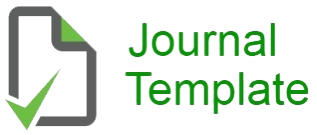THE STRATEGY TO IMPROVE CLEAN WATER SERVICES IN BENGKULU PROVINCE
Abstract
Based on the conditions of the three PDAM offices in Bengkulu Province, it shows that the availability of clean water in Bengkulu Province is as follows: 1) the quality of clean water is still low and the suitability of clean water sources does not meet quality standards; 2) the needs of water are increasing (quantity); 3) the need for clean water continues to increase over time (continuity); 4) clean water management is not optimal (affordability) based on the Performance Evaluation by BPKP on PDAM Bengkulu Province in 2019. This type of research is a descriptive with qualitative approach and this research is located in three location namely Central Bengkulu Regency, North Bengkulu Regency and Bengkulu City. The number of specimens in this research was 400 PDAM consumers. Based on the results of the SWOT analysis of improving service quality, it was found that EFAS and IFAS were in quadrant II (0.126; -0.245) with a diversification strategy. This result focuses on the 4 Ks (quantity, quality, continuity and affordability) according to J. Nijman (1997) and Barata (2003). Therefore, the regional drinking water company owned by the regional government of Bengkulu Province has improved the quality of clean water services which will have an impact on community welfare and independence in receiving public services in the clean water sector. The strategy to improve clean water services in Bengkulu province requires management based on customer satisfaction, clean water availability, quality, quantity and continuity based on regulations and business plans of companies that manage clean water owned by each PDAM office. Clean water services and management will also provide basic services for community needs, increasing profits, and retribution to regional income (PAD).
Keywords: Strategy, Service Quality, PDAM, SWOT.
References
Ahmad, J. (2018). Pengembangan Kapasitas (Capacity Building) Kelembagaan Daerah Dalam Meningkatkan Kualitas Layanan Publik Di Era Revolusi 4.0.
Ansori Tawakal. (2019). Pengembangan Sumber Daya Manusia Nelayan untuk Meningkatkan Kesejahteraan Masyarakat. Bandung : Mandar Maju.
Dougherty and Pfaltzgraff. (1990). Contending Theories Of International Relations. A Comprehensive Survey 5th Edition.
Fandy Tjiptono, dan Gregorius Chandra. (2011). Service, Quality and Satisfaction (ed 3).
Ferry, R. Anggoro Suryokusumo. (2008). Pelayanan Publik dan Pengelolaan Infrastruktur Perkotaan. Yogyakarta: Sinergi Publishing.
Kotler, Philip dan Gary Armstrong. (2008). Prinsip-prinsip Pemasaran. Edisi 12 Jilid 1. Jakarta: Erlangga.
Nugroho, Iwan. (2003). Strategi Pengembangan Sektor Air Bersih. Majalah Perencanaan Pembangunan-BAPPENAS …, February, 1–13.
Pemerintah Republik Indonesia, Peraturan Pemerintah No. 16 Tahun 2005 tentang Pengembangan Sistem Penyediaan Air Minum.
Peraturan Menteri Dalam Negeri No. 21 Tahun 2020 Tentang Perubahan Atas Peraturan Menteri dalam Negeri Nomor 71 Tahun 2016 Tentang Perhitungan dan Penetapan Tarif Air Minum
Peraturan Menteri Dalam Negeri No. 23 Tahun 2006 Tentang Pedoman Teknis dan Tata Cara Pengaturan Tarif Air Minum pada Perusahaan Daerah Air Minum.
Peraturan Menteri Kesehatan Republik Indonesia Nomor 492 Tahun 2010 Tentang Persyaratan Kualitas Air Minum.
Peraturan Menteri Kesehatan Republik Indonesia Nomor 736 Tahun 2010 Tentang Tata Laksana Pengawasan Kualitas Air Minum.
Peraturan Menteri Pekerjaan Umum No. 18/PRT/M/2007 tentang Penyelenggaraan Pengembangan Sistem Penyediaan Air Minum.
Peraturan Menteri Pekerjaan Umum No. 14/PRT/M/2010 tentang Standar Layanan Minimal (SPM) Bidang Pekerjaan Umum dan Penataan Ruang.
Slovin, M.J. (1960). Sampling, Simon and Schuster Inc. New York.
Downloads
Published
Issue
Section
License
Copyright (c) 2024 INTERNATIONAL JOURNAL OF ECONOMIC LITERATURE

This work is licensed under a Creative Commons Attribution-NonCommercial-ShareAlike 4.0 International License.
INTERNATIONAL JOURNAL OF ECONOMIC LITERATURE © 2023 by Adisam Publisher is licensed under CC BY-SA 4.0







